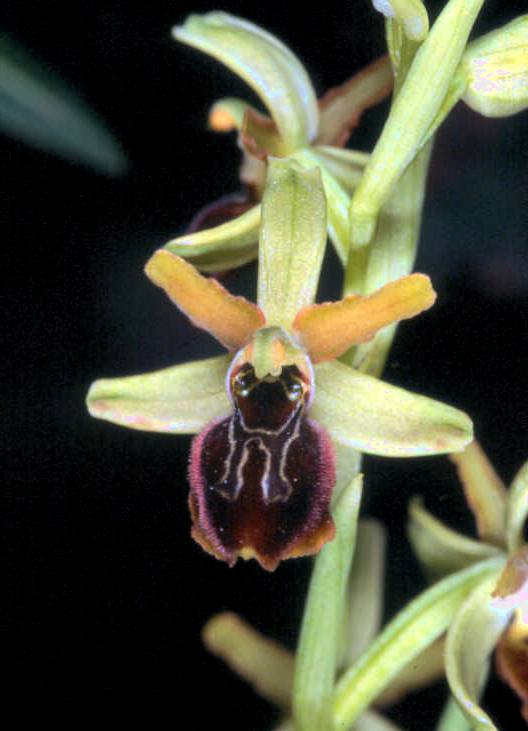 |
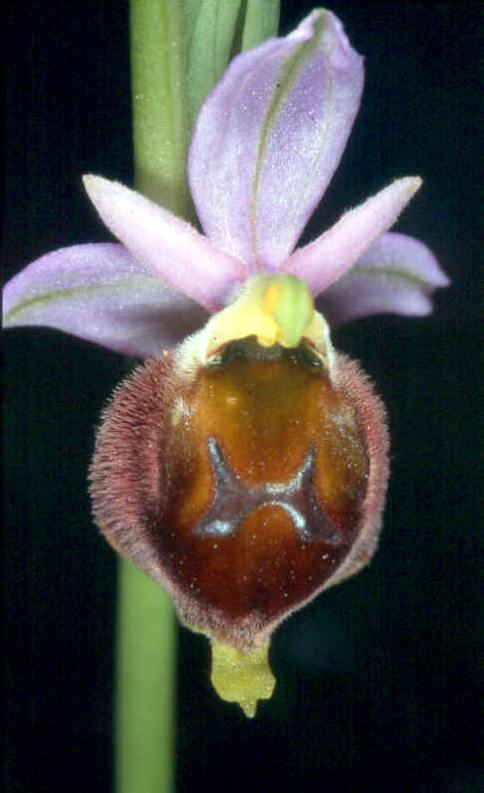 |
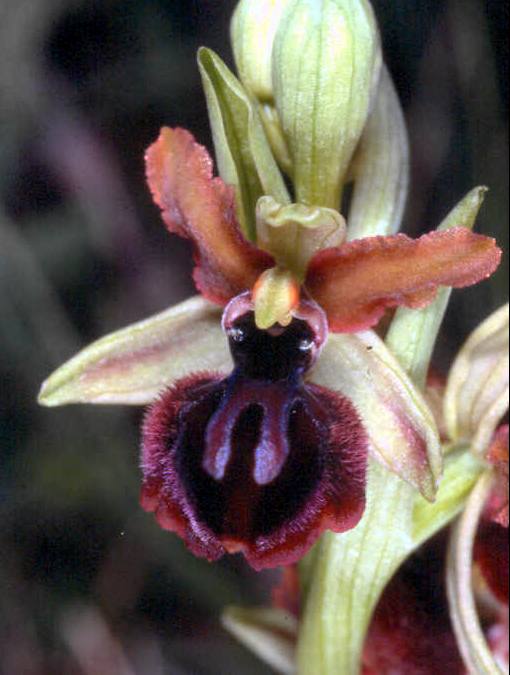 |
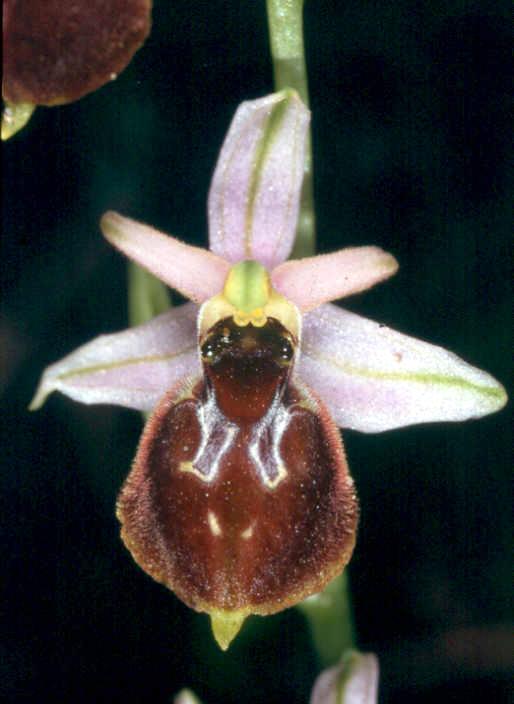 |
 |
 |
 |
 |
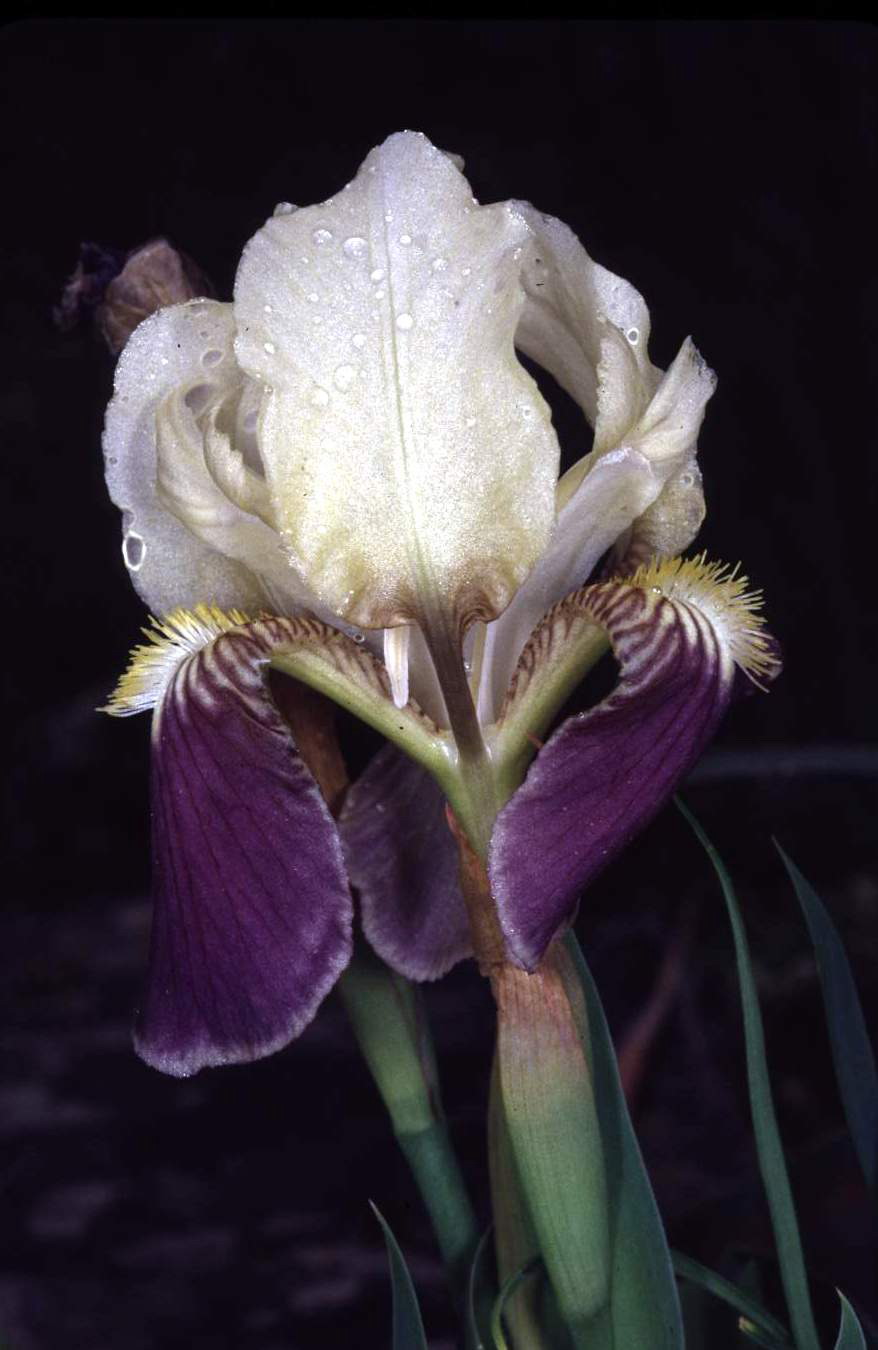 | 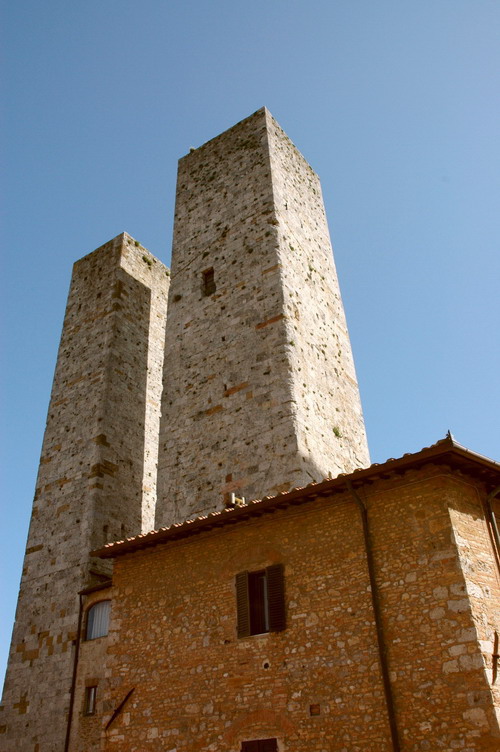 | 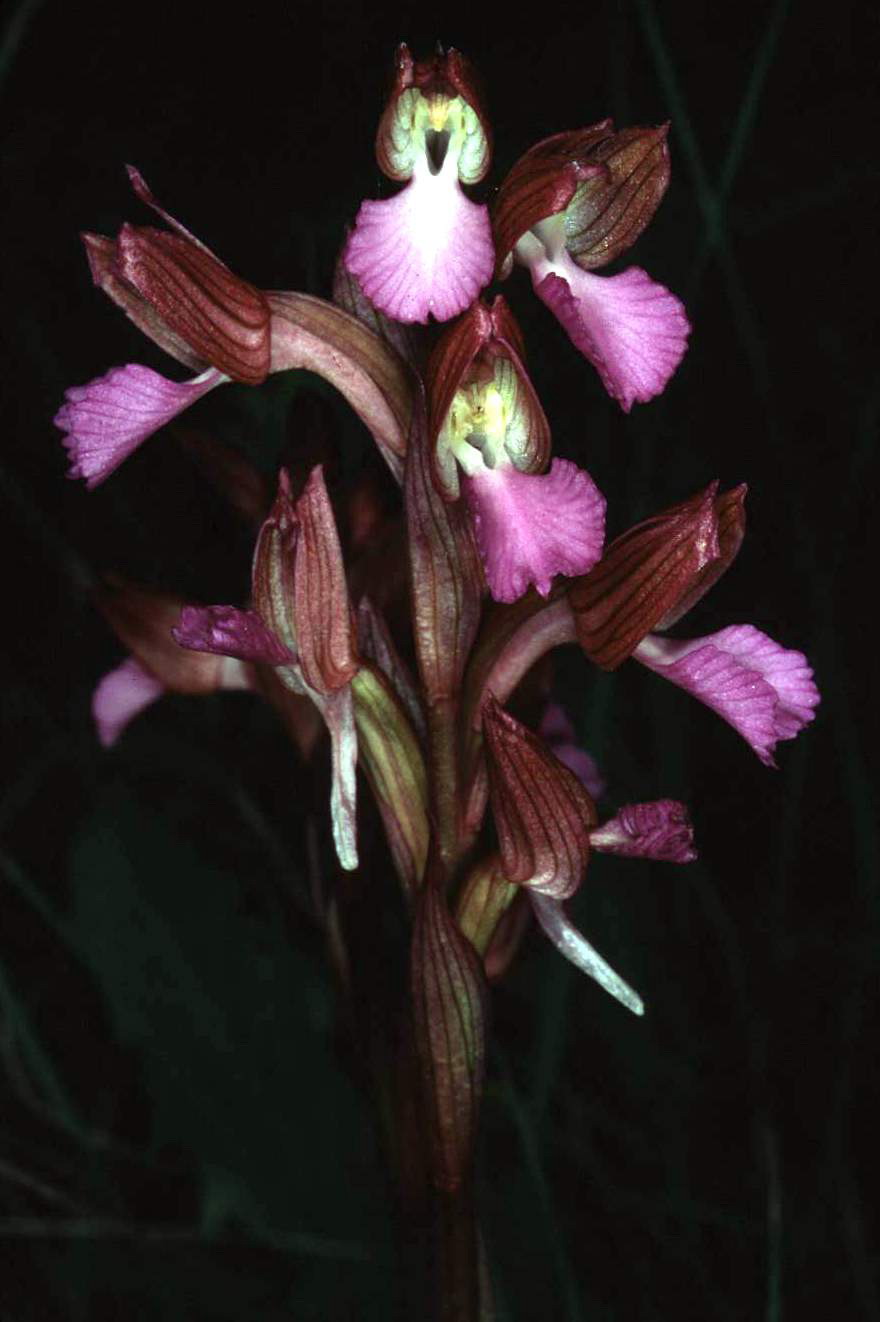 |
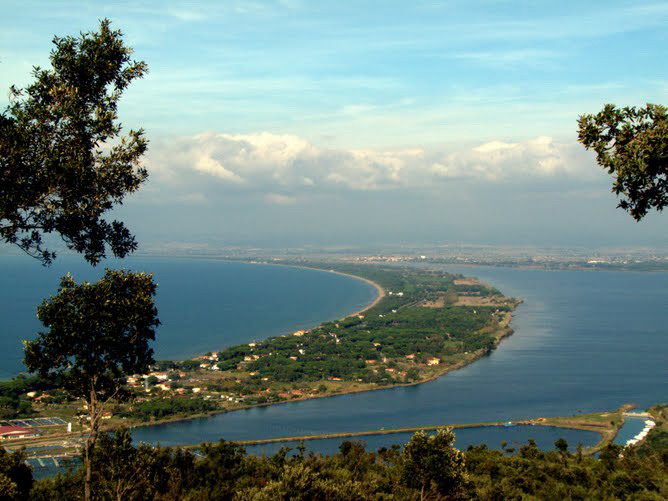 |
This species with large flowers (length of the lip 14-20 mm) is most probably quite often confused with O. fusca (A2-9). It's however rather easily distinguished from that latter species by the macula of the lip which doesn't reach the sinus of the lateral lobes, which it does by O. fusca. The plant is a mid-season one, flowering in March and April. It grows in Italy, Tuscany, Sicily, Malta and maybe in other places of the central Mediterranean bassin. But its distribution area, like that of O. fusca is not yet well understood. It is easily distinguished from O. hespera, the other "fusca" s. l. of the region by the size of the flowers, those of O. hespera being much smaller with a lip length of 8-10 mm and by the flowering period, O. hespera is indeed a late species at its best in the last week of April and in May. Cette espèce à grandes fleurs (longueur du labelle comprise entre 14 et 20 mm) doit être assez souvent confondue avec O. fusca (A2-9). Elle s'en distingue cependant facilement par la longueur de la macule du labelle qui n'atteint pas les sinus des lobes latéraux, ce qu'elle fait chez O. fusca. La plante fleurit en mars-avril. Elle pousse en Italie, en particulier en Toscane et en Sicile, à Malte et sans doute ailleurs dans le bassin méditerranéen central, mais son aire de répartition, tout comme celle d'O. fusca, reste incertaine. On distingue facilement O. lucifera d'O. hespera, l'autre "fusca" s. l. de ces régions par la taille des fleurs, celles d'O. hespera ont un labelle long de 8-10 mm et par la période de floraison. O. hespera est en effet une espèce tardive qui fleurit dans la dernière semaine d'avril et en mai. Bibliography: Devillers,P. & Devillers-Terschuren,J. 2000.- Notes phylogénétiques sur quelques Ophrys du complexe d'O. fusca s.l. en Méditerranée centrale. Natural. belges 81 (Orchid. 13) : 298-322. Tyteca,D. 2003.- Observations sur les Orchidées de l'île d'Elbe (Italie). L'Orchidophile 158: 189-195. | ||
| O. lucifera 01 | Italy, Toscana Talamone | 05-04-1991 |
| O. lucifera 02 | Italy, Toscana Talamone | 05-04-1991 |
| O. lucifera 03 | Italy, Toscana Talamone | 05-04-1991 |
| O. lucifera 1 Slide Daniel Tyteca Ave-et-Auffe, Belgium |
Italy, Grosseto Isola d'Elba | 08-04-2001 |
| O. lucifera 5 | Italy, Toscana Monte Argentario | 11-04-2010 |
| O. lucifera 6 Slide Helmut Presser Neumarkt in der Oberpfaltz, Germany A scape |
Italy, Toscana Monte Argentario Porto Santo Stefano | 04-04-2004 |
| O. lucifera 7 Slide Helmut Presser Neumarkt in der Oberpfaltz, Germany |
Italy, Toscana Monte Argentario Porto Santo Stefano | 04-04-2004 |
| O. lucifera 8 Slide Helmut Presser Neumarkt in der Oberpfaltz, Germany |
Italy, Toscana Monte Argentario Porto Santo Stefano | 04-04-2004 |
| O. lucifera 9 Slide Helmut Presser Neumarkt in der Oberpfaltz, Germany Large yellow edge |
Italy, Toscana Monte Argentario Porto Santo Stefano | 04-04-2004 |
| O. lucifera 10 Slide Helmut Presser Neumarkt in der Oberpfaltz, Germany |
Italy, Toscana Monte Argentario Porto Santo Stefano | 04-04-2004 |
| O. lucifera 11 Slide Helmut Presser Neumarkt in der Oberpfaltz, Germany |
Italy, Toscana Monte Argentario Porto Santo Stefano | 04-04-2004 |
This is the small flowered "fusca" s. l. from Monte Argentario on the western coast of Italy. The lip is very small, 8-10 mm long, much shorter than that of the other "fusca" s. l. present in the region, O. lucifera, the length of the lip of which is 14-20 mm. O. hespera flowers mostly on the late, after the third week of April and well into May, on the countrary to O. lucifera which flowers much more early in March and early April. The species exists in Toscana and perhaps also in Liguria but its distribution area is poorly known. There is no unanimity about this species, some orchidologist believing it to be a synonym of O. sulcata, others a synonym of O. delforgei. Il s'agit du "fusca" s. l. à petites fleurs du Monte Argentario, sur la côte tyrrhénienne de l'Italie. Son labelle est très petit, d'une longueur de 8-10 mm; beaucoup plus petit que celui de l'autre "fusca" s. l. de cette région, O. lucifera dont le labelle atteint une longueur de 14-20 mm. O. hespera fleurit sur le tard, depuis la dernière semaine d'avril jusqu'en mai alors qu'O. lucifera fleurit en mars et au début d'avril. L'espèce existe en Toscane et peut-être en Ligurie, mais son aire de répartition est mal connue. Il n'y a pas de vrai consensus à propos d'O. hespera, certains orchidologues en faisant un synonyme d'O. sulcata, d'autres d'O. delforgei. Bibliography : Devillers,P. & Devillers-Terschuren,J. 2000.- Notes phylogénétiques sur quelques Ophrys du complexe d'Ophrys fusca s.l. en Méditerranée centrale. Natural. belges 81 (Orchid. 13): 298-322. | ||
| O. hespera 1 | Italy, Toscana Monte Argentario |
17-04-2001 |
| O. hespera 2 | Italy, Toscana Monte Argentario |
17-04-2001 |
| O. hespera 3 | Italy, Toscana Monte Argentario |
17-04-2001 |
| O. hespera 4 | Italy, Toscana Monte Argentario |
17-04-2001 |
| O. hespera 5 | Italy, Toscana Monte Argentario |
17-04-2002 |
| O. hespera 6 | Italy, Toscana Monte Argentario |
17-04-2002 |
| O. hespera 7 | Italy, Toscana Monte Argentario |
17-04-2002 |
| O. hespera 8 Slide Helmut Presser Neumarkt in der Oberpfalz, Germany Two flowers |
Italy, Toscana Monte Argentario Porto Santo Stefano | 22-04-201 |
| O. hespera 9 Slide Helmut Presser Neumarkt in der Oberpfalz, Germany A scape |
Italy, Toscana Monte Argentario Porto Santo Stefano | 22-04-201 |
| O. hespera 10 Slide Helmut Presser Neumarkt in der Oberpfalz, Germany |
Italy, Toscana Monte Argentario Porto Santo Stefano | 22-04-201 |
| O. hespera 11 Slide Helmut Presser Neumarkt in der Oberpfalz, Germany |
Italy, Toscana Monte Argentario Porto Santo Stefano | 22-04-201 |
| O. hespera 12 Slide Helmut Presser Neumarkt in der Oberpfalz, Germany |
Italy, Toscana Monte Argentario Porto Santo Stefano | 22-04-201 |
| O. hespera 13 Slide Helmut Presser Neumarkt in der Oberpfalz, Germany |
Italy, Toscana Monte Argentario Porto Santo Stefano | 22-04-201 |
O. speculum susp. orientalis H. F. Paulus = O. eos P. Devillers & J. Devillers-Terschuren 2009 Prof. Hannes Paulus has now shown that eastern plants of this species are pollinated by the bee Dasiscolia ciliata subsp. araratensis instead of the typical subspecies Dasiscolia ciliata which pollinates western plants. The eastern plants are hence considered forming a distinct subspecies, O. speculum subsp. orientalis. For more informations about this, see OPHRYS NEWS n°5. Please note that this subspecies has recently (2009) been upgraded to specific level with the name Ophrys eos P. Devillers & J. Devillers-Terschuren 2009. Le Professeur Hannes Paulus (Vienne, Autriche) a montré que les plantes orientales de cette espèce (à l'est de l'Italie) sont pollinisées par l'abeille Dasiscolia ciliata subsp. araratensis au lieu de Dasiscolia ciliata qui pollinise les plantes typiques, occidentales. (Le locus typicus d'O. speculum est au Portugal!) Les plantes de l'est du bassin méditerranéen sont par conséquent considées comme appartenant à une sous-espèce particulière, O. speculum subsp. orientalis. Vous trouverez davantage d'informations concernant ce problème dans OPHRYS NEWS n°5. Veuillez noter que cette sous-espèce vient d'être élevée au rang spécifique (2009) sous le nom d'Ophrys eos P. Devillers & J. Devillers-Terschuren 2009. Bibliography : Delforge,P.1999.-Contribution à la stabilisation de la nomenclature dans le groupe d'Ophrys fusca : désignation d'un néotype pour Ophrys fusca Link in Schrader 1800, Ophrys funerea Viviani 1824, Ophrys bilunulata Risso 1844 et Ophrys forestieri (Reichenbach fil. 1851)Lojacono 1909.Natural. belges (Orchid.12) : 179-229. Devillers,P. & Devillers-Terschuren,J. 1994.- Essai d'analyse systématique du genre Ophrys. Natural. belges 75 (Orchid. 7, suppl.): 342-343. Devillers, P. & Devillers-Terschuren, J. 2009.- Rhodian Ophrys: Diagnostic characters, relationships and biogeography. Natural. belges 90 (Orchid.22): 233-290. Paulus, H.F. 2001.- Daten zur Bestäubungsbiologie und Systematik der Gattung Ophrys in Rhodos (Griechenland) mit Beschreibung von Ophrys parvula, Ophrys persephonae, Ophrys lindia, Ophrys eptapigiensis spec. nov. aus der Ophrys fusca s. str. Gruppe und Ophrys cornutula spec. nov. aus der Ophrys oestrifera-Gruppe (Orchidaceae und Insecta, Apoidea). Ber. Arbeitskrs. Heim. Orch. 18(1): 38-86. | ||
| O. speculum 17 subsp. speculum | Italy, Toscana Fonteblanda - Talamone | 12-04-2010 |
This very well known small Ophrys is absolutely constant all over its large distribution area which extends form the Canary islands (where it is the only Ophrys species) to western Anatolia and North Africa. Ce petit Ophrys bien connu est absolument constant dans toute son énorme aire de répartition qui s'étend des îles Canaries (où c'est la seule espèce d'Ophrys) à l'Anatolie occidentale et à l'Afrique du Nord. | ||
| O. bombyliflora 23 | Italy, Toscana Fonteblanda - Talamone | 08-04-2010 |
Ophrys of the O. tenthredinifera group from peninsular Italy have much smaller flowers than those of typical O. tenthredinifera and always have a conspicuous tuft of hairs above the appendix. They attract two different bees, Eucera clypeata and E. oraniensis. The plant grows from Tuscany to Campania and Apulia and is often quite common. The situation of the group appears to be extremely intricated in Sardinia, where probably many different species are present. Slides 1-2-9 show plants from monte Gargano, Apulia. Slides 3-4-5-6 show Sardinian plants, which belong perhaps to another species, but that, at least temporarily, I include in O. neglecta Slides 7-8 show a plant from monte Pollino, Calabria. Slides 12 to 18 are quite interesting as they show Croatian plants. They were very kindly given by Roko Cicmir (Zagreb, Croatia) who also provided the following comments : " It's a plant with very small flowers, for sure much closer to O. neglecta than to O. ulyssea recently described from the Ionian world by Pierre Delforge. The plant is very common in the Konavle district where it grows in thousands mixed with O. montenegrina. (The Konavle district is the southernmost tip of Croatia, southeast of Dubrovnik.) On the other hand, two sole plants were spotted on the Peljesac peninsula and Lastovo island. Although orchidologist having recently visited Dalmatia don't speak of any plant of the O. tenthredinifera group, O. villosa was already said to grow over there in 1872 by the Croatian botanist Schlosser, and O. tenthredinifera was mentioned in 1986 by Gölz & Reinhard." It appears that seeds of O. neglecta are brought from Italy to Dalmatia by the western trade winds, allowing the species to get a new stronghold over there. You will find more informations about it under the heading OPHRYS NEWS n°12. Les Ophrys du groupe d'O. tenthredinifera qui poussent en Italie péninsulaire ont des fleurs bien plus petites que celles d'O. tenthredinifera sensu stricto, et présentent toujours une importante touffe de poils au-dessus de l'appendice. Ils attirent deux pollinisateurs différents, Eucera clypeata et E. oraniensis. Ils poussent en Toscane, dans le Latium, en Campanie et dans les Pouilles. La situation semble beaucoup plus compliquée en Sardaigne où plusieurs espèces, ayant des fleurs de tailles différentes et fleurissant à des époques différentes, sont sans doute présentes. Les dias 1-2-9 montrent des plantes du promontoire du Gargano dans les Pouilles. Les dias 3-4-5-6 montrent des plantes sardes qui appartiennent peut-être à une autre espèce, mais que je juge plus prudent de maintenir, au moins provisoirement, dans O. neglecta. Les dias 7-8 montrent une plante du monte Pollino, en Calabre. Les dias 12 à 18 sont très intéressantes car elles montrent des plantes croates. Elles ont gentiment été données par Roko Cicmir (Zagreb, Croatie) qui a fourni les informations suivantes : "Il s'agit de plantes à petites fleurs, bien plus proches d'O. neglecta que d'O. ulyssea, espèce récemment décrite du monde ionien par Pierre Delforge. La plante est abondante dans le district de Konavle où elle pousse par milliers en compagnie d'O. montenegrina. (Si nécéssaire, le district de Konavle est la partie la plus méridionale de la Croatie, au sud-est de Dubrovnik.) D'autre part, deux plantes isolées on été repérées dans la presqu'île de Peljesac et l'île de Lastovo. Bien que les orchidologues qui ont récemment parcouru la Dalmatie n'aient que peu parlé d'O. tenthredinifera s.l., il y a déjà des mentions d'O. villosa en 1872 par le botaniste croate Schlosser, et d'O. tenthredinifera en 1986 par Gölz & Reinhard." Il est possible que le sud de la Croatie subisse une colonisation à partir de graines amenées d'Italie par les vents d'ouest. Vous trouverez davantage d'informations concernant cette espèce dans la rubrique OPHRYS NEWS n°12. Bibliography : Devillers,P., Devillers-Terschuren,J. & Tyteca,D. 2003.- Notes on some of the taxa comprising the group of O. tenthredinifera Willdenow. J. Eur. Orch. 35: 109-162. | ||
| O. neglecta 19 Some plants | Italy, Toscana Albarese | 05-04-1991 |
| O. neglecta 20 | Italy, Toscana Ancedonia | 04-04-1991 |
This wonderful species grows along the Tyrrhenian coast of Italy in Toscana and in Latium. Further south, O. pollinensis takes its place. The shape of the stigmatic cavity of the two species is very different. Cette très belle espèce pousse le long de la côte occidentale de l'Italie, en Toscane et dans le Latium. Plus au sud elle est remplacée par O. pollinensis. La disposition des parois extérieures de la cavité stigmatique est très différente chez les deux espèces. | ||
| O. crabronifera 1 | Italy, Toscana | 04-04-1991 |
| O. crabronifera 2 | Italy, Toscana | 04-04-1991 |
| O. crabronifera 3 | Italy, Toscana | 04-04-1991 |
| O. crabronifera 4 | Italy, Toscana Livorno, San Carlo |
06-04-1991 |
| O. crabronifera 5 | Italy, Toscana Livorno, San Carlo |
06-04-1991 |
| O. crabronifera 6 With white petals and sepals |
Italy, Toscana Livorno, San Carlo | 06-04-1991 |
| O. crabronifera 7 With green petals and sepals |
Italy, Toscana Livorno, San Carlo | 06-04-1991 |
| O. crabronifera 8 With yellow border on the lip |
Italy, Toscana Livorno, San Carlo | 06-04-1991 |
| O. crabronifera 9 With yellow border on the lip |
Italy, Toscana Livorno, San Carlo | 06-04-1991 |
| O. crabronifera 10 With much reflexed sepals | Italy, Toscana San Carlo | 07-04-2010 |
| O. crabronifera 11 With very small macula | Italy, Toscana San Carlo | 07-04-2010 |
| O. crabronifera 12 With very narrow lip | Italy, Toscana San Carlo | 07-04-2010 |
| O. crabronifera 13 With very broad lip | Italy, Toscana San Carlo | 07-04-2010 |
| O. crabronifera 14 With good view of the pilosity | Italy, Toscana San Carlo | 07-04-2010 |
| O. crabronifera 15 | Italy, Toscana Albarese | 12-04-2010 |
This species is better known by the junior synonym O. tyrrhena Gölz & H.R.Reinhard Slides 4 to 9 are made in the lawns of the Solvay factory, San Carlo, province of Livorno, Italy. The species is endemic to the Tyrrhenian coast of Italy, from Genova to Latina and Frosinone. Flowers are rather large with a 10-14 mm long lip. Cette espèce est mieux connue sous le nom d'O. tyrrhena Gölz & H.R.Reinhard, un synonyme ultérieur. Les diapositives 4 à 9 ont été faites dans les pelouses de l'usine Solvay, à San Carlo, dans la province de Livourne, en Italie. L'espèce est endémique de la côte tyrrhénienne de l'Italie depuis Gênes jusqu'à Latina et Frosinone. Les fleurs sont assez grandes avec un labelle dont la longueur est comprise entre 10 et 14 mm. Pollinator - Pollinisateur : Colletes cunicularius Bibliography : Devillers-Terschueren,J & Devillers,P. 1988.- Les Ophrys "arachnitiformes" du bassin méditerranéen occidental. Natural. belges 69 (Orchid. 2): 98-112. | ||
| O. montis-leonis 1 | Italy, Toscana Marina di Castagneto-Doronatico | 03-04-1991 |
| O. montis-leonis 2 | Italy, Toscana Monte Argentario Road to Il Telegrafo | 04-04-1991 |
| O. montis-leonis 3 Hypochrom variety | Italy, Toscana Monte Argentario Road to Il Telegrafo | 04-04-1991 |
| O. montis-leonis 4 | Italy, Toscana San Carlo, Livorno |
06-04-1991 |
| O. montis-leonis 5 | Italy, Toscana San Carlo, Livorno |
06-04-1991 |
| O. montis-leonis 6 | Italy, Toscana San Carlo, Livorno |
06-04-1991 |
| O. montis-leonis 7 | Italy, Toscana San Carlo, Livorno |
06-04-1991 |
| O. montis-leonis 8 With white petals and sepals | Italy, Toscana San Carlo, Livorno |
06-04-1991 |
| O. montis-leonis 9 With white petals and sepals and a strange lip | Italy, Toscana San Carlo, Livorno |
06-04-1991 |
| O. montis-leonis 10 | Italy, Toscana Marina di Castagneto-Doronatico | 14-04-2010 |
| O. montis-leonis 11 | Italy, Toscana Marina di Castagneto-Doronatico | 14-04-2010 |
Many species follow one another , replacing themselves from North to South along the western coast of Italy. O. montis-leonis (B13-3) grows in Liguria and the North of Tuscany; in the South of Tuscany, Latium, and Molise O. classica takes its place. Further south, in Campania, it is O. cilentana (B13-4) and in Calabria and Sicily, the endemic O. exaltata (B13-8) brings up the rear. This succession is very well documented in Devillers,P. & Devillers-Terschuren,J. 2000. See bibliography. The rather quadrangular, 10-13 mm long lip usualy has strong gibbosities. When the species grows with other species of the group like O. argentaria or O. tarquinia there are hybrid strains and determinations are difficult. O. classica is quite a rare, early flowering, species. Plusieurs espèces se succèdent, en se remplaçant du nord au sud le long de la côte occidentale de l'Italie. En Ligurie et dans le nord de la Toscane, c'est O. montis-leonis (B13-3) qui fleurit; dans le sud de la Toscane, le Latium et le Molise, il est remplacé par O. classica. Plus au sud encore, en Campanie, leur place est occupée par O. cilentana (B13-4). Enfin en Calabre et en Sicile, c'est O. exaltata (B13-8) qui ferme la marche. Cette succession est très bien décrite dans Devillers,P. & Devillers-Terschuren,J. 2000. Voyez la bibliographie. O. classica est une plante assez rare, fleurissant tôt. Le labelle long de 10-13 mm est assez quadrangulaire et porte en général des gibbosités prononcées. Lorsque la plante pousse avec d'autres espèces du même groupe, comme O. argentaria ou O. tarquinia, il apparaît des essaims hybrides et les déterminations sont difficiles. Bibliography: Devillers,P. & Devillers-Terschuren,J. 2000.- Transitions biogéographiques dans quelques populations d'Euophrys de Tyrrhénienne nord-orientale. Natural. belges 81 (Orchid. 13): 339-352. Tyteca,D. 2003.- Observations sur les Orchidées de l'île d'Elbe (Italie). L'Orchidophile 158: 189-195. | ||
| O. classica 5 Slide Daniel Tyteca Ave-et-Auffe, Belgium |
Italy, Toscana Grosseto Isola d'Elba | 05-04-2001 |
| O. classica 6 Slide Daniel Tyteca Ave-et-Auffe, Belgium |
Italy, Toscana Grosseto Isola d'Elba | 05-04-2001 |
| O. classica 7 Slide Daniel Tyteca Ave-et-Auffe, Belgium |
Italy, Toscana Grosseto Isola d'Elba | 06-04-2001 |
| O. classica 8 Slide Daniel Tyteca Ave-et-Auffe, Belgium |
Italy, Toscana Grosseto Isola d'Elba | 06-04-2001 |
| O. classica 9 Two flowers | Italy, Toscana San Carlo | 07-04-2010 |
| O. classica 10 | Italy, Toscana San Carlo | 07-04-2010 |
| O. classica 11 Side view | Italy, Toscana San Carlo | 07-04-2010 |
| O. classica 12 | Italy, Toscana Monte Argentario Road to Il Telegrafo | 11-04-2010 |
| O. classica 13 | Italy, Toscana Monte Argentario Road to Il Telegrafo | 11-04-2010 |
| O. classica 14 | Italy, Toscana Monte Argentario Road to Il Telegrafo | 11-04-2010 |
This species is essentially of Tuscan distribution. It has rather large flowers. The more or less ovoid lip is 11-16 mm long, usually without or with small gibbosities. The plant is anyway quite variable and subject to introgressions from related species like O. classica or O. argentaria. It flowers in April and in the beginning of May, depending on altitude. Cette espèce à relativement grandes fleurs est essentiellement toscane. Le labelle, plus ou moins ovoïde, est long de 11-16 mm. Il est généralement dépourvu de gibbosités, ou celles-ci sont peu prononcées. Mais la plante est fort variable et sujette aux influences d'espèces voisines telles qu'O. classica et O. argentaria. La floraison s'échelonne d'avril au début de mai suivant l'altitude. Pollinator - Pollinisateur : Andrena tibialis Bibliography : Delforge,P. 2000.- Ophrys tarquinia sp. nova, une espèce toscane du groupe d'Ophrys exaltata. Natural. belges 81 (Orchid. 13): 83-88. | ||
| O. tarquinia 1 | Italy, Toscana San Gimignano - Castel San Gimignano | 06-04-2010 |
| O. tarquinia 2 | Italy, Toscana San Gimignano - Castel San Gimignano | 06-04-2010 |
| O. tarquinia 3 | Italy, Toscana San Gimignano - Castel San Gimignano | 06-04-2010 |
| O. tarquinia 4 | Italy, Toscana San Gimignano - Castel San Gimignano | 06-04-2010 |
| O. tarquinia 5 | Italy, Toscana San Carlo | 07-04-2010 |
| O. tarquinia 6 | Italy, Toscana San Carlo | 07-04-2010 |
| O. tarquinia 7 | Italy, Toscana Saturnia - Usi | 13-04-2010 |
| O. tarquinia 8 | Italy, Toscana Saturnia - Usi | 13-04-2010 |
| O. tarquinia 9 | Italy, Toscana Sassetta - Monterotondo Campo di Carlo Locus typicus | 14-04-2010 |
| O. tarquinia 10 | Italy, Toscana Sassetta - Monterotondo Campo di Carlo Locus typicus | 14-04-2010 |
This nice little Ophrys, with very small and highly variable flowers, is endemic to the middle Tyrrhenian coast of Italy, where it flowers quite early, in March and early April. It's quite rare, but some very important populations do occur, mainly on the tomboli connecting monte Argentario with the continent. Sometimes O. argentaria, O. classica and O. tarquinia grow mixed together with in-between forms making identifications rather tricky. Ce joli petit Ophrys, aux très petites fleurs fort variables, est endémique de la côte tyrrhénienne moyenne de l'Italie, où il fleurit assez tôt, en mars et au début d'avril. Il est assez localisé, mais il en existe des populations très fournies, en particulier sur les tombolos qui relient le mont Argentario au continent. O. argentaria, O. classica et O. tarquinia poussent parfois ensemble sur les mêmes sites. Des formes intermédiaires peuvent alors exister et compliquer les déterminations. Pollinator - Pollinisateur : Andrena fulvata Bibliography : Devillers,P. & Devillers-Terschuren,J. 1994.- Essai d'analyse systématique du genre Ophrys. Natural. belges 75 (Orchid. 7 suppl.): 360-362. | ||
| O. argentaria 1 | Italy, Toscana Marina di Castagneto-Doronatico | 03-04-1991 |
| O. argentaria 2 | Italy, Toscana Marina di Castagneto-Doronatico | 03-04-1991 |
| O. argentaria 3 | Italy, Toscana Marina di Castagneto-Doronatico | 03-04-1991 |
| O. argentaria 4 | Italy, Toscana Ansedonia | 04-04-1991 |
| O. argentaria 5 | Italy, Toscana Ansedonia | 04-04-1991 |
| O. argentaria 6 | Italy, Toscana Ansedonia | 04-04-1991 |
| O. argentaria 7 | Italy, Toscana Ansedonia | 04-04-1991 |
| O. argentaria 8 | Italy, Toscana Ansedonia | 04-04-1991 |
| O. argentaria 9 lusus with three lips |
Italy, Toscana Ansedonia | 04-04-1991 |
| O. argentaria 10 | Italy, Toscana Albarese | 12-04-2010 |
| O. argentaria 11 Very nice flower | Italy, Toscana Albarese | 12-04-2010 |
| O. argentaria 12 Two flowers | Italy, Toscana Fonteblanda - Talamone | 09-04-2010 |
| O. argentaria 13 Long lip; perhaps introgressed by O. tarquinia |
Italy, Toscana Fonteblanda - Talamone | 09-04-2010 |
| O. argentaria 14 Two flowers | Italy, Toscana Fonteblanda - Talamone | 09-04-2010 |
| O. argentaria 15 | Italy, Toscana Fonteblanda - Talamone | 09-04-2010 |
| O. argentaria 16 | Italy, Toscana Fonteblanda - Talamone | 09-04-2010 |
This species is still very often called O. atrata which is a junior synonym. Slides 8 to 11 are made in Croatia, on the Dalmatian coast, close to Primosten, where O. incubacea is of common occurence. Cette espèce est encore souvent appelée O. atrata. Mais ce nom, donné illégitimement par Lindley, est un synonyme postérieur. Les diapositives 8 à 11 sont faites en Croatie, près de Primosten sur la côte dalmate, où O. incubacea est très commun. Pollinator - Pollinisateur : Andrena morio | ||
| O. incubacea 21 | Italy, Toscana Ancedonia | 04-04-1991 |
Slides 1-2 show Tuscan plants. Slides 3-4-5 plants from monte Gargano, with rather large flowers on a compact stalk. On the other side, slides 6-7-8, also made in the Gargano peninsula, show plants with smaller flowers, more distant on the stalk. These plants look more slender and flower perhaps 10 days before those illustrated on slides 3-4-5. The species has very recently been discovered in Croatia, to begin with on the islands of Korcula and Prezba (Lastovo islands), and for the first time, in 2007, by Roko Cicmir on the continent (see slide 9). Four species, O. archipelagi, lacaitae, neglecta and O. garganica grow on both sides of the Adriatic sea. Les dias 1-2 montrent des plantes toscanes. Les dias 3-4-5 sont faites au promontoire du Gargano, dans les Pouilles. Les plantes ont d'assez grandes fleurs portées sur une inflorescence compacte. Par contre, celles des dias 6-7-8, elles aussi photographiées au Gargano, sont plus grêles et fleurissent une dizaine de jours plus tôt. Elles ont des fleurs plus petites, plus espacées sur la tige. L'espèce vient d'être découverte en Croatie. Tout d'abord dans les îles de Korcula et Prezba (archipel de Lastovo) et tout récemment, en 2007, par Roko Cicmir, sur le continent. Quatre espèces, O. archipelagi, lacaitae, neglecta et O. garganica sont ainsi présentes des deux côtés de l'Adriatique. Pollinator - Pollinisateur : Andrena carbonaria | ||
| O. garganica 1 | Italy, Toscana Albarese | 03-04-1991 |
| O. garganica 2 | Italy, Toscana Albarese | 03-04-1991 |
| O. garganica 10 | Italy, Toscana Albarese | 12-04-2010 |
| O. garganica 11 | Italy, Toscana Albarese | 12-04-2010 |
| O. garganica 12 | Italy, Toscana Albarese | 12-04-2010 |
| O. garganica 13 Very nice flower | Italy, Toscana Albarese | 12-04-2010 |
| O. garganica 14 Very nice flower | Italy, Toscana Albarese | 12-04-2010 |
| O. garganica 15 | Italy, Toscana Albarese | 12-04-2010 |
| O. garganica 16 | Italy, Toscana Albarese | 12-04-2010 |